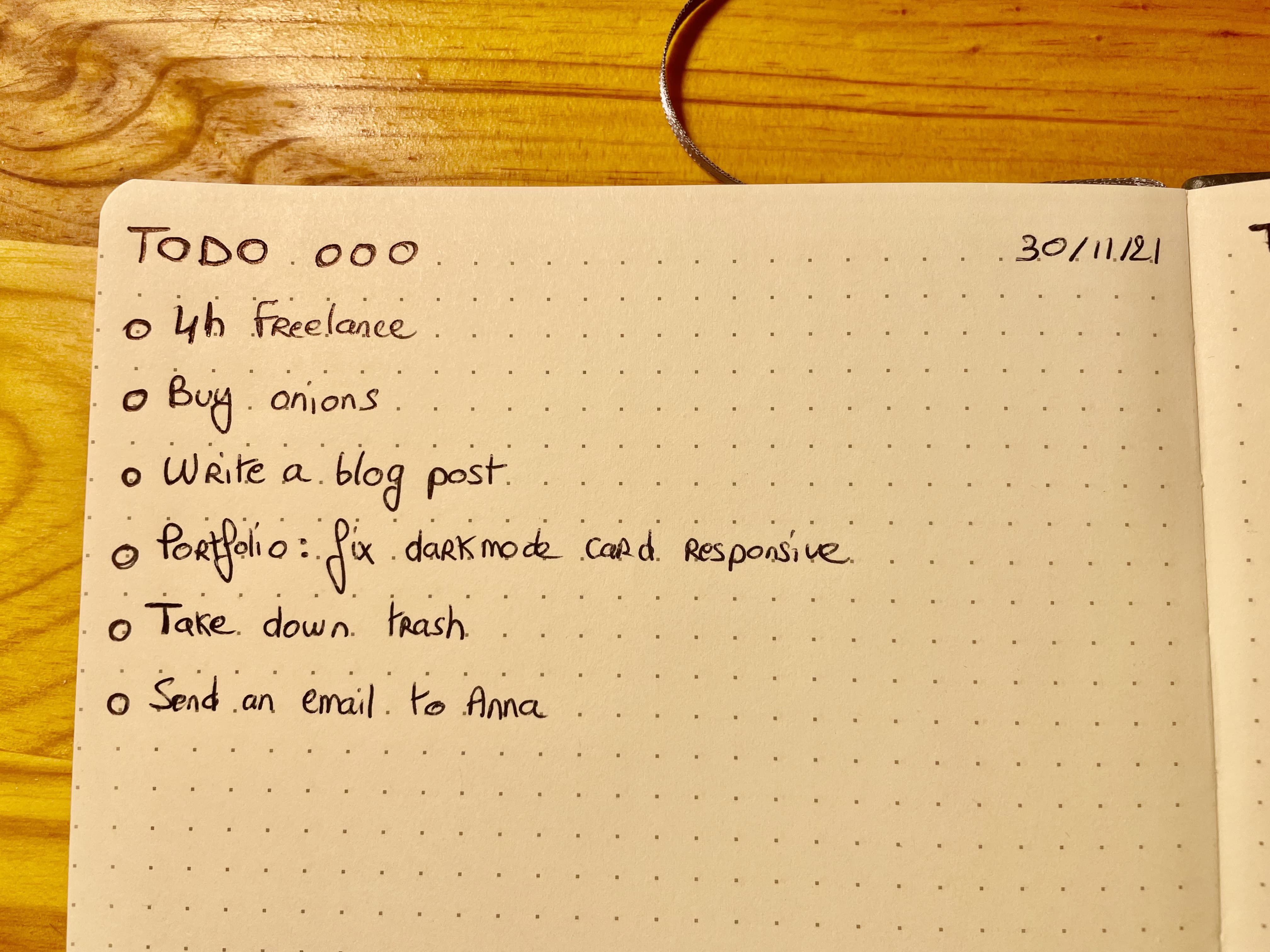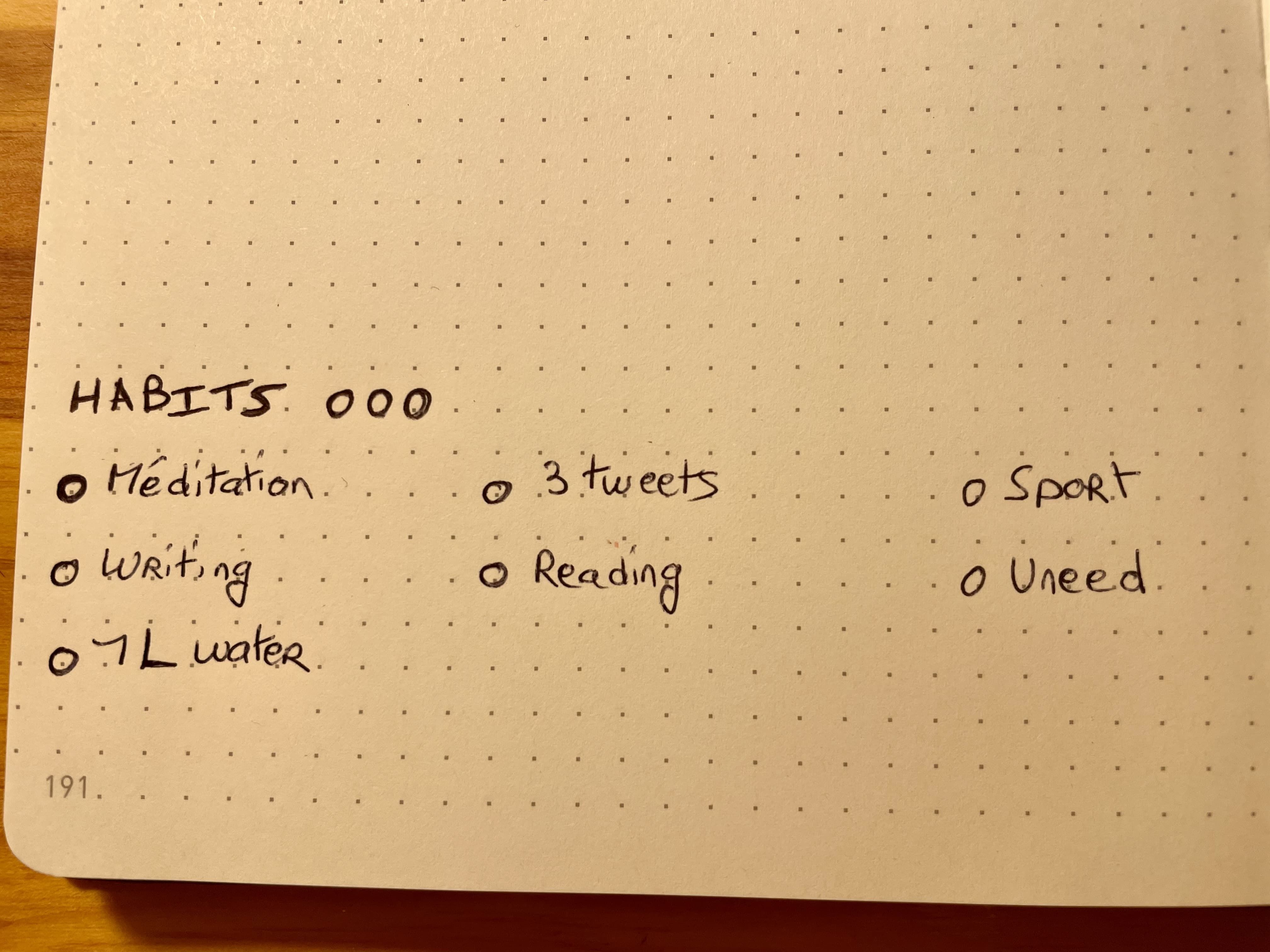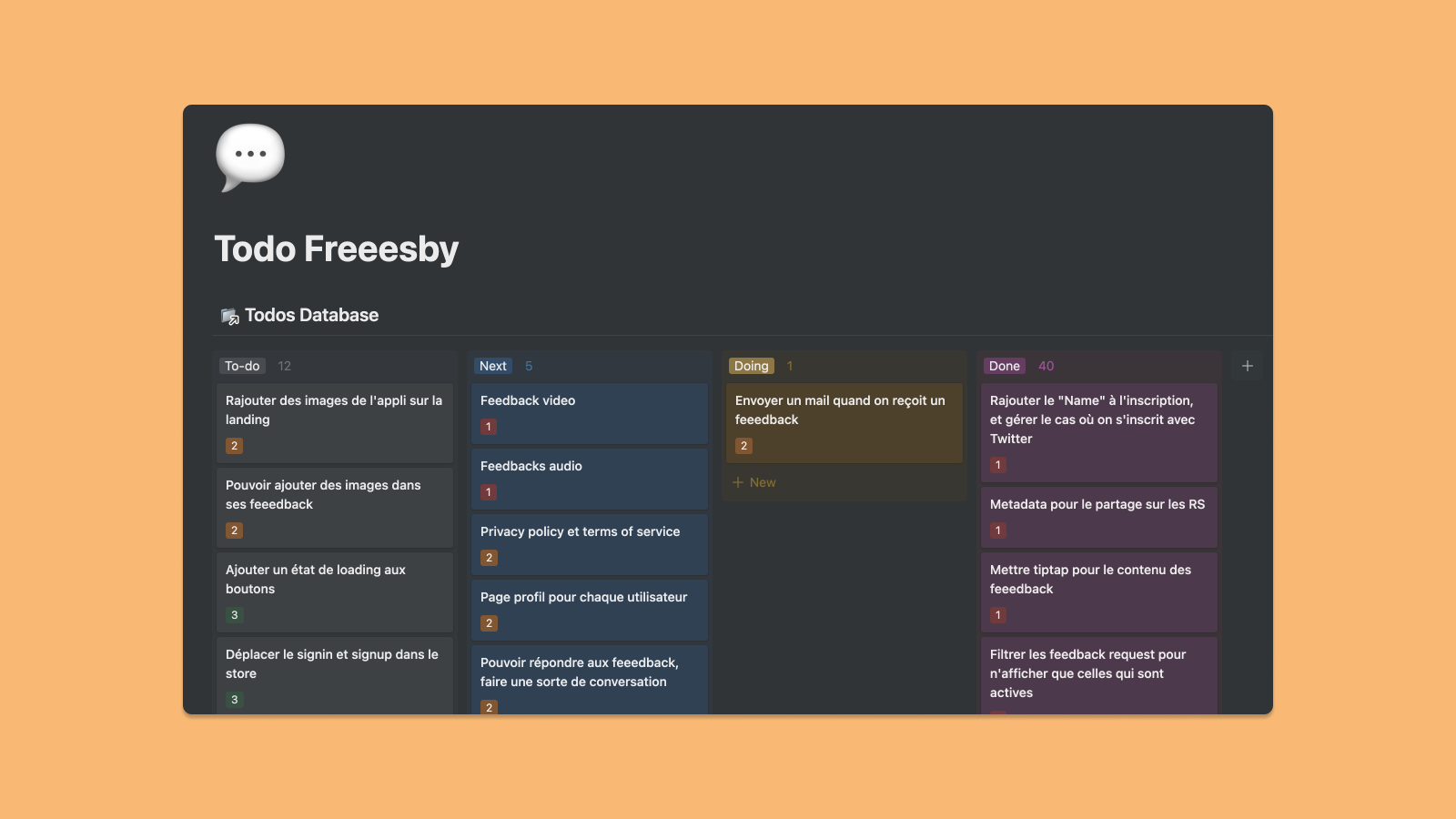The Toto-todo method
Organizing your projects and your daily life is not that complicated.
I spent a lot of time trying, using, and then throwing away applications to help me get organized. I tried everything: Habitica, Things, Notion, Todoist and more. Except for Habitica which I used for almost a year, none of them really worked for me.
I always had the same problems: the application didn't allow me to do what I wanted, it wasn't available on all platforms, the UX was bad, you couldn't separate projects, there were no notions of repetitive tasks or "habits", and little by little I ended up not using it anymore.
We find ourselves trying a lot of different applications, and we end up getting lost among all these possibilities!
Well, I have good news for you: the truth is that you don't need all these applications and features. In fact, you can organize your daily lives quite simply.
Ok. But how?
At the beginning of 2021, I got tired of fighting against productivity apps, and I uninstalled them all, except for Notion which I used for a lot of other things (and which is quite different than the others). Just doing that helped me a lot. In the days that followed, I felt a weight off my shoulders, I really did! Try it 🤗.
It still wasn't ideal: I had nothing left to manage my projects and my to-dos, and I often wondered what to do. When you have several personal and client projects, it is necessary to keep a record somewhere so you can find your way around.
A few weeks later I stumbled upon Ugmonk's analog on Twitter. My first thought was (sorry!!) "what a scam, $90 for some sheets of paper and a piece of wood". Ok, I still think so in a way 😅. But I was more interested in the concept they were proposing, which is simply to write down your tasks for the day on a piece of paper and complete it throughout the day. On their website, they say something very interesting:
Analog doesn't replace your digital tools, it works alongside them.
This sentence sums up what I had failed to understand in the last few years, and what I have been trying to do with my new organization. Digital tools don't necessarily have to totally replace physical tools: used together, they can be more effective and more efficient.
I wanted to try it and bought myself a notebook to reproduce their idea. It was February 2021. We're now in November, I'm still using it every day, and I have made several changes over time. I haven't tried anything else since, and yet I've seen a lot of new products and have been tempted many times 😄.

A simple notebook?
Each page of my notebook represents a day and is divided into two parts: TODOS and HABITS.

Each of these parts contains a score out of 3 represented by three circles. At the end of each day, I give myself a score out of 3 by shading the circles, based on the number of tasks I completed.
The TODOS are the tasks of the day, which are not repetitive. It can be for example "Make the landing page of freeesby", or "Make a laundry". I try not to put a lot of tasks: usually, I'm around 6 per day. Sometimes I add more during the day. But the important thing is that for the most part, I have to get all my to-dos completed. That doesn't mean I have to work like crazy, but rather that I shouldn't overload myself. On days when I'm not in shape, I assign myself very few tasks. Giving yourself a 3/3 score at the end of the day gives you a sense of satisfaction, and proves to you that you have done enough. Mental is the most important part here 🤓!

HABITS are tasks that come up every day, and that I try to integrate gradually into my daily routine. It can be "Add a tool on Uneed", or "Write a tweet", or "Meditate for 5 minutes". I also try to put them in the order I do them (that's my obsessive side). The most important thing with habits is to take it slow. You don't want them to feel like to-dos! If you add 3 new habits at once, you probably won't be able to do them for long. Go gradually, and focus on habits that "follow" each other, such as "Exercise", "Drink a large glass of water". Habits are a real science, and can be very powerful. I recommend the book "Atomic Habits" by James Clear if you are interested in this subject.

Besides that, I still need to keep to-do lists for my projects. So I have a Notion database for each of them, represented as a Kanban. If I want to work on my Portfolio today, I open my database and put the relevant tasks in an "in progress" column
And Notion?

In Notion, I first created a "master" database in which all my to-dos are stored. I use a few properties:
- A title, very short, which explains what I have to do.
- A tag, which will allow me to filter my to-dos by project. It can be "Personal", "Portfolio", "Freeesby", etc.
- A status, which can be quick, "To-do", "Next", "In progress", or "Done".
- A priority, which can be 1, 2, or 3. For larger projects, this makes it easier to know which tasks need to be done quickly.
And that's it! Each project then has its own to-do, which is a "linked database" of my main database. Depending on how you work, you can add properties to your to-dos like "Due Date", "To-do this week", etc. The possibilities are endless, it's up to you to find something that fits your routine! I'll soon publish my Notion template online for you guys to use.
But don't forget the most important thing: the tool doesn't matter. Keep it simple, and don't give in to the temptation of trying to calculate everything, measure everything, and do everything in the most perfect way possible. As long as you are on track and know what to do each day, the tool is just a tool.
🙏 Thank you very much for reading this article to the end. Feel free to send me a message on twitter if you want to chat!
-- Thomas